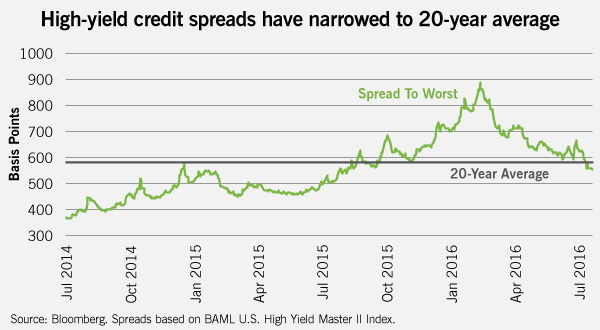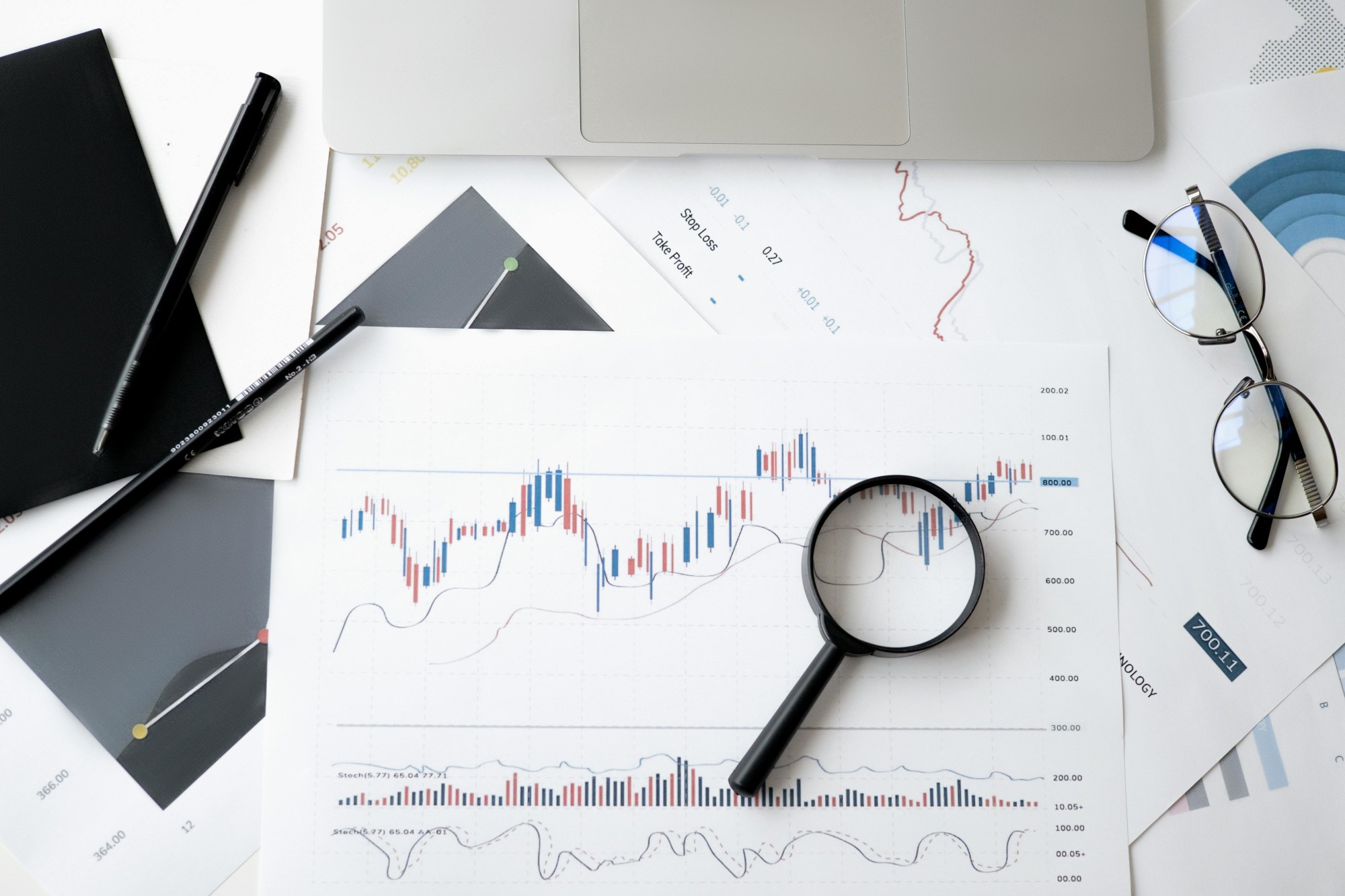Invest
What’s next for bonds after the rally?
We believe solid fundamentals and the ongoing search for income are supportive of high yield bonds.
The snapback rally in high yield bonds since mid-February has some wondering if this market has gotten ahead of itself.
We believe there is still opportunity for long-term investors looking for income, but caution against chasing recent performance.
US high yield bond indexes have posted a total return of about 13 per cent so far this year as oil and commodity prices have rebounded. Yields are currently in the 6 to 7 per cent range.
Credit spreads, or the difference between yields on high yield bonds and US Treasurys of similar duration, have narrowed in recent months. However, they are only slightly below their 20-year average, so high yield isn’t overvalued based on historical levels. In fact, we still expect spreads to grind tighter in the near term.

Based on our outlook, we think high yield could be attractive for income-seeking investors, although they should be prepared for some volatility and shouldn’t expect recent performance to repeat.
Fundamentals: The fundamentals remain adequately healthy to be supportive of high yield, given the current spreads.
Default rates: High-yield default rates rose to 3.6 per cent in the second quarter of 2016 versus the long-term average of 3.9 per cent. Default risk is highly concentrated in the energy and metals/mining sectors due to concerns about commodity prices. The rate would be about 0.5 per cent without those sectors. Despite the relative health of the remainder of the asset class, we believe default rates will rise due to existing levels of distress in commodity-driven sectors. Oil prices could also remain depressed in coming years.
Supply/demand: Demand has rebounded in 2016 with retail (mutual fund) demand accounting for about $10 billion year-to-date. The much larger institutional market is more difficult to track, but we see evidence of strong institutional demand for high yield, particularly overseas where government bond yields are low or negative. Meanwhile, supply was down 19 per cent in the first half of 2016 and we expect that trend to continue in the second half of the year.
In summary, rising defaults, geopolitical risks, and concerns over global growth and commodity prices may cause volatility to rise. Still, for long-term investors, overall solid fundamentals and the ongoing search for income are supportive of high yield bonds.
Kelley Baccei, high yield portfolio manager, Eaton Vance.
What’s next for bonds after the rally?
We believe solid fundamentals and the ongoing search for income are supportive of high yield bonds.
The snapback rally in high yield bonds since mid-February has some wondering if this market has gotten ahead of itself.
We believe there is still opportunity for long-term investors looking for income, but caution against chasing recent performance.
US high yield bond indexes have posted a total return of about 13 per cent so far this year as oil and commodity prices have rebounded. Yields are currently in the 6 to 7 per cent range.
Credit spreads, or the difference between yields on high yield bonds and US Treasurys of similar duration, have narrowed in recent months. However, they are only slightly below their 20-year average, so high yield isn’t overvalued based on historical levels. In fact, we still expect spreads to grind tighter in the near term.

Based on our outlook, we think high yield could be attractive for income-seeking investors, although they should be prepared for some volatility and shouldn’t expect recent performance to repeat.
Fundamentals: The fundamentals remain adequately healthy to be supportive of high yield, given the current spreads.
Default rates: High-yield default rates rose to 3.6 per cent in the second quarter of 2016 versus the long-term average of 3.9 per cent. Default risk is highly concentrated in the energy and metals/mining sectors due to concerns about commodity prices. The rate would be about 0.5 per cent without those sectors. Despite the relative health of the remainder of the asset class, we believe default rates will rise due to existing levels of distress in commodity-driven sectors. Oil prices could also remain depressed in coming years.
Supply/demand: Demand has rebounded in 2016 with retail (mutual fund) demand accounting for about $10 billion year-to-date. The much larger institutional market is more difficult to track, but we see evidence of strong institutional demand for high yield, particularly overseas where government bond yields are low or negative. Meanwhile, supply was down 19 per cent in the first half of 2016 and we expect that trend to continue in the second half of the year.
In summary, rising defaults, geopolitical risks, and concerns over global growth and commodity prices may cause volatility to rise. Still, for long-term investors, overall solid fundamentals and the ongoing search for income are supportive of high yield bonds.
Kelley Baccei, high yield portfolio manager, Eaton Vance.


Bonds
Institutional investors shift towards bonds amid market volatility
Institutional investors moderated their risk appetite in April, leading to a surge in demand for the US dollar and a retreat from riskier assets, according to the latest State Street Institutional ...Read more

Bonds
Boost in confidence: investor sentiment balances out in November
In the ever-evolving dance of market sentiment, institutional investors recently took a step towards optimism, as revealed by State Street Global Markets in their November update of the State Street ...Read more

Bonds
Investors take note: review portfolios as global bond surge mirrors 2008 crisis
Investors are being urged to scrutinise their investment portfolios as the global bond market experiences a rally not seen since the 2008 financial crisis. Read more

Bonds
Overstretched US dollar sets the stage for a financial correction in December
As the US bond market sees a robust rally, the financial landscape braces for an impending correction. Ipek Ozkardeskaya, Senior Analyst at Swissquote Bank, sheds light on the current economic ...Read more

Bonds
Sustainable bonds tipped to exceed US$1.5tn in 2022
The sustainable bond market is forecast to grow while overall bond issuance stagnates. Read more

Bonds
Corporate bond market review makes 12 recommendations to enhance investment
Twelve recommendations have been made to support the development of a more active corporate bond market in Australia. Read more

Bonds
Common mistakes in buying bonds that investors should avoid
The bond market is considered as a safe haven for Aussie investors and it’s easy to see why. Read more

Bonds
Student files lawsuit over government bonds
A 23-year-old student has filed a lawsuit against the Australian government after alleging that it failed to disclose climate change-related risks to investors in the country’s sovereign bonds. Read more








